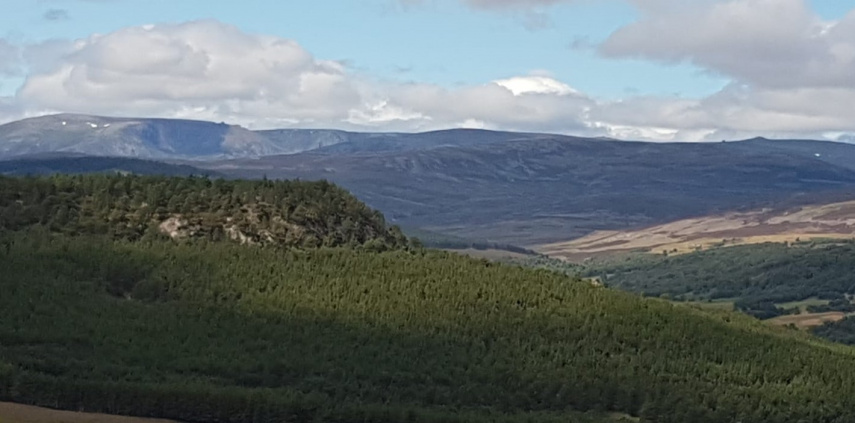
Embedding land rights and responsibilities in natural capital investment and delivery
Emma Cooper
In this blog, Head of Land Rights and Responsibilities, Emma Cooper, explores the how Scotland’s land rights and responsibilities framework can help deliver a values-led, high-integrity market for responsible investment in natural capital and land.
Scotland has a fantastic, but finite, land resource. The type and quality of our land means Scottish Government has set a target to reach net zero by 2045. Our degraded peatland and areas of land suitable for forestry enable us to sequester carbon quickly. This means we can attract natural capital investment enabling us to deliver at the pace and scale needed to deliver net zero, but this brings challenges and opportunities.
In previous blogs we have looked at the importance of shaping this emerging market in the public interest. Over the last few months we have worked with Scottish Government and other stakeholders to explore a set of principles for a values-led, high-integrity market for responsible investment in natural capital. The Scottish Government has now set out these interim principles to support the ambitions of a just transition, economic transformation and biodiversity. Here, I am going to look at the framework that needs to be in place to deliver on this.
The market for land and carbon is developing quickly in Scotland, raising new questions and presenting risks and opportunities. There are concerns about ‘greenwashing’ – where something is branded as eco-friendly or sustainable when it is not; a possible increase in concentration of land ownership and an associated growth in absentee land owners; about how land use change decisions are made, who makes them, and how do they impact on communities; of offsetting being used instead of reducing emissions at source; about land values being inflated and excluding more from accessing the land they need to meet their needs and aspirations. I doubt any investor or land owner wants to attract the kind of negative headlines that have recently been generated because of these concerns.
To respond to these challenges, we need to build a shared understanding of what responsible practice in this context means and looks like, and ensure we embed it in practice and policy. The Scottish Government’s Land Rights and Responsibilities Statement (LRRS) gives us a useful starting point in understanding what responsible practice in relation to investment in natural capital and delivery could look like. The LRRS takes a human rights approach to helping us understand how to balance land rights and responsibilities and applies to all those who make decisions over land, including investors.
Importantly, the LRRS can help us understand how to achieve a just transition, setting out how land can deliver public benefit alongside private benefit. Our LRRS Protocols set out practical expectations for how to put the LRRS into practice. We are building on the work to develop the interim principles for responsible investment, by developing a Protocol with stakeholders specifically addressing responsible practice in relation to natural capital and carbon sequestration. Underpinning this is a need to ensure that land ownership, use, and management decisions are balanced, seek to achieve wider social, economic, environmental, and cultural benefits, and will not have a detrimental impact.
It is also worth considering whether land ownership is necessary if seeking to offset emissions or secure natural capital value. Collaboration or partnership with communities can embed wider benefits, enabling communities to achieve their aspirations alongside investor and land owner aspirations, and ensuring corporate social responsibilities are met genuinely, transparently and with accountability.
For an approach to natural capital delivery to be genuine it should be nature-positive, taking into account other considerations such as biodiversity and wildlife corridors. A long-term and protective view needs to be taken where we ensure what we have is preserved and enhanced for future generations, not damaged by short-term financial gains. Where land is highly suitable for a primary use, such as food production or water catchment management, we need to factor this into decision-making.
Changes in land use should benefit those they impact upon. How local communities gain and share in the benefits natural capital can bring, including financial benefits, needs to be considered. The benefits need to be delivered in a holistic way which helps meet community needs and wants and goes beyond the obvious environmental benefits. There may be opportunities to procure services locally, develop training and skills, tackle damaging vacant and derelict land, provide amenities and recreational spaces, reduce flooding, and so on.
Genuine collaboration and engagement with communities will highlight these opportunities. Early engagement will ensure decisions about investment and delivery of natural capital are made to mutual benefit, building understanding of the impact decisions will have in the short and longer term. This engagement should be undertaken genuinely, honestly, and transparently, in line with the protocol on community engagement in decisions relating to land.
It is essential that we have a coordinated, cohesive approach to ensuring that investment and natural capital management reaches net zero in a way that furthers wider policy and aspirations for sustainable and fair economic growth. By working together within the frameworks we already have, we can do just that.
